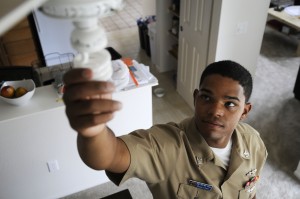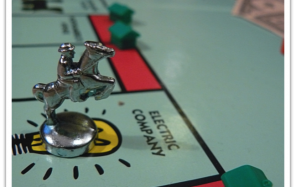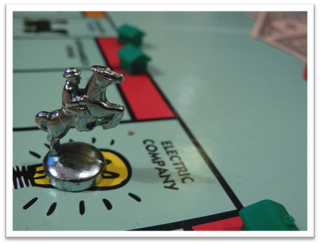 You may not realize it, but your monthly electric bill is a valuable tool. It tells you what, when and how you spend your energy dollars every month. By knowing how to “translate” these dollars and cents into energy use information, you can identify energy and cost-saving opportunities. Then, after you’ve taken steps to reduce energy use, your bill can act as a “score card” and give you monthly feedback on your progress.
You may not realize it, but your monthly electric bill is a valuable tool. It tells you what, when and how you spend your energy dollars every month. By knowing how to “translate” these dollars and cents into energy use information, you can identify energy and cost-saving opportunities. Then, after you’ve taken steps to reduce energy use, your bill can act as a “score card” and give you monthly feedback on your progress.
Most electric bills are complex and can be difficult to read or understand. As a property or facility manager, you might not even see them on a monthly basis.
However, the operating decisions you make each day directly affect your bill’s bottom line. Also, by understanding how energy is measured and billed, you can discover ways to reduce energy cost by controlling when and how energy is consumed.
Typical electric bills are broken down into three major categories of costs:
Delivery Services
Customer charge: The customer charge recovers costs associated with making service available to a customer, such as installing and maintaining meters, utility poles, power lines and equipment, as well as meter reading and PSNH’s 24-hour customer service center.
Distribution Charge: This charge recovers costs related to the maintenance and operation of PSNH’s distribution system, and PSNH’s power restoration and service operations. The KWH charge is based on the number of kilowatt-hours (KWH) of electricity used during a billing period. The KW charge, or “demand” charge, is based on the greatest amount of electricity used in any half-hour period during a billing period.
Transmission Charge: This charge recovers costs related to the delivery of electricity over the high-voltage or transmission system power lines. The KWH charge is based on the number of kilowatt-hours (KWH) of electricity used during a billing period. The KW charge, or “demand” charge, is based on the greatest amount of electricity used in any half-hour period during a billing period.
Stranded Cost Recovery Charge: This charge helps fund the recovery of PSNH’s past investment costs, including expenses incurred through mandated power contracts and other long-term investments and obligations. The KWH charge is based on the amount of kilowatt-hours (KWH) of electricity a customer has used during a billing period. The KW charge, or “demand” charge, is based on the greatest amount of electricity used in any half-hour period during a billing period. A portion of this charge is owned by PSNH Funding LLC and is being collected on its behalf.
System Benefits Charge: This charge funds energy efficiency programs for all customers as well as assistance programs for residential customers within certain income guidelines.
Deregulated Supply
Energy Charge: This charge is based on the amount of kilowatt-hours (KWH) of electricity a customer has used during a billing period. It includes a supplier’s costs to generate and/or buy power.
Taxes
Electricity Consumption Tax: This is a state-mandated tax on electricity consumption.
Get Going
Once you understand how your facility’s electricity use is metered and billed, you can better manage your energy consumption. Next, taking the steps necessary to make operational changes to reduce these costs becomes a lot easier. For example, energy and cost-saving steps can include:
- Comparing the present bill with the bill for the same billing period in the previous year, not the previous month. There can be various usage differences in a month-to-month comparison, such as warmer or cool weather conditions or holidays.

Image courtesy of US Navy on Flickr
- Developing a comprehensive energy and cost reduction plan and sharing it with your employees, and submitting the application for your building’s “Energy Star” rating.
- Making utility costs known to employees.
- Getting copies of your electric bills and keeping track of monthly expenses and usage with an energy management software solution.
- Setting goals and targets for both energy consumption reduction and demand reduction.
- Looking for periods of unusually high or abnormal energy use and determining the cause.
- Identifying the time of your peak demand, determining causes of this peak, and finding ways to reduce it. Consider possible strategies for shifting equipment operations into utility off-peak periods.
- Identifying equipment that runs excessively and using automatic controls to shut it down when not needed.
- Setting controls so that operation is staggered (for instance two pumps that need to operate only one hour per day should be controlled so as not to operate at the same time).
- Understanding that utilities have different rates for different types of customers. Talk with your utility representative, and make sure you are being charged the correct rate for your facility. Inquire if there are programs offered that will allow lower rates.
- Implementing energy conservation and efficiency measures.



 The high level concept of energy deregulation is defined as when government reduces its role and allows industry greater freedom in how it operates. Similar to deregulation in other industries like telecommunication and transportation, energy deregulation involves the purchase of electricity and natural gas through a competitive market. In a regulated market, commercial, industrial and residential users of electricity and natural gas are forced to buy energy through the utility without competition.
The high level concept of energy deregulation is defined as when government reduces its role and allows industry greater freedom in how it operates. Similar to deregulation in other industries like telecommunication and transportation, energy deregulation involves the purchase of electricity and natural gas through a competitive market. In a regulated market, commercial, industrial and residential users of electricity and natural gas are forced to buy energy through the utility without competition.